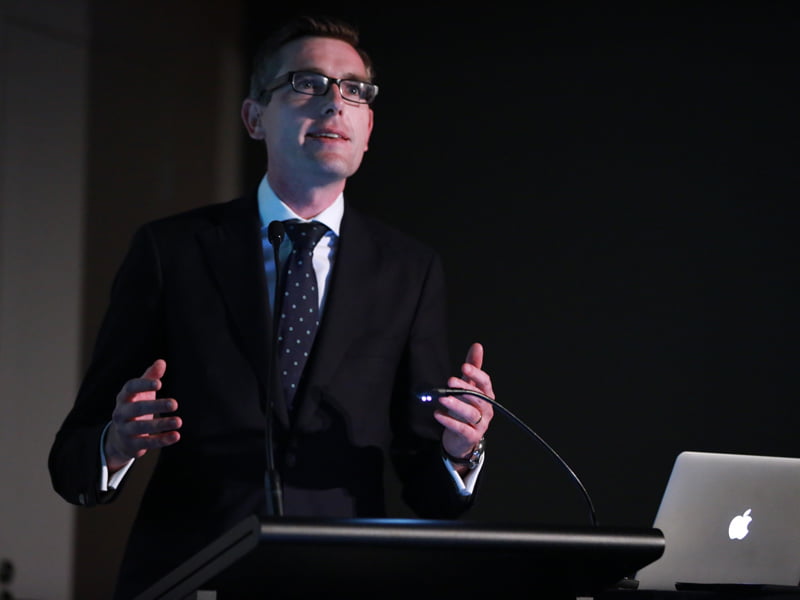Just last week I renewed my driver’s licence. You know the drill. You walk in, you take a numbered ticket, you fill in a form, you wait half an hour, then you go and have your photo taken.
No more, at least not in New South Wales. The state government has now announced that all this can be done online, with your old photo valid for up to ten years.
It’s all part of the digitisation of government services. I was even able to get a new birth certificate recently, by sending the state government a copy (a photo taken on my smart phone) of my passport, drivers licence and Medicare card.

The NSW Government has been at the forefront of the digital delivery of public services, and in Canberra the Digital Transformation Office has that as its sole reason for being. Other states are all making moves. They all have the right idea, but they are not working together.
Australia has a federal system of government, which is already causing potential problems in the delivery of digital services. A key issue is authentication. It is not just ensuring that you have a common log-in across government departments, it is ensuring that it is indeed you who is conducting the transactions.
The lack of a common authentication system has already become a problem, and has the potential to be a much bigger one. The Government’s clunky MyGov portal was meant to be the answer.
The states were asked to join MyGov, but politely declined, not wanting to be party to its well-publicised failings. Victoria made some noises about using it, but never followed through.
Because it was overlaid on existing legacy systems MyGov never quite worked properly. It was taken off the Department of Human Services, which originally developed it, and given to the DTO earlier this year.
The DTO is now developing a ‘Trusted Digital Identity Framework’ which may well end up replacing the cumbersome verification system used for MyGov.
The key debate is whether the approach should be some sort of federated approach to trust management, as used by MyGov, or the use of a single digital authentication/signature. The first alternative is cheaper and easier because it can be built on the top of existing systems, but as MyGov showed, this has its problems.
The second approach also has problems. It would mean a new front-end to most government applications, and would also require something like a digital version of the long defunct Australia Card, with all the privacy concerns that entails.
But the privacy and security – and technology – landscapes are very different now from when the Australia Card was proposed 30 years ago.
The dream of a single interface for all government services is still a long way off, but at least the DTO is on the case, and has promised a prototype by August. But NSW is way ahead, and has charted its own course, with its own digital verification process. And of course banks and telcos and Internet companies all have their own systems as well.
The best we can probably hope for is that federal and state – and maybe local, which is now on the digital delivery bandwagon – can cooperate, so at least governments and their agencies operate under a single authentication regimen.
There is, unfortunately, no indication that this will happen. NSW introduced its own Oracle-based federation style system, called ‘MyServiceNSW’ in February 2016, initially only for the Office of State Revenue and Roads and Maritime Services.
Federalism is a great idea. In theory it respects regional differences while ensuring the whole is greater than the sum of the parts. But, as they say, in theory practice and theory are the same, but in practice they are not. Too often Australian federalism has meant battles between states and the Commonwealth over the division of powers, duplication of resources, and even open conflict.
Authentication in the digital delivery of government services cuts to the very heart of federalism. Who develops and owns the systems? Who pays for them? Who are the gatekeepers? These questions need to be answered, and soon, or all the disadvantages of federalism will be carried through to the digital era.
Australia is at the beginning of a revolution in the digital delivery of government services, but for the potential of this technology to be realised, a few preconditions need to be met. Ultimately, it is all about trust. That is what authentication systems are supposed to enforce, but trust is a much bigger issue than that.
Citizens need to trust government and different levels of government, and different government agencies, need to trust each other. Australia has a unique opportunity, right now, to get this right. We should not let the opportunity pass.
NSW Finance Minister Dominic Perrottet, who launched the service in Sydney on Tuesday, said bringing transactions like licence renewals to Service NSW’s digital channels was about offering citizens the most convenient options possible.
“Since July 2013, the popularity of Service NSW’s online transactions has doubled every year, and with licence renewals now online too, we expect it will keep growing,” Mr Perrottet said.
“The important thing is that people have access to the options that suit them best, and that means offering first-class customer service through our Service NSW one-stop shops, while also making digital services available in the palm of your hand.”
Do you know more? Contact James Riley via Email.

